Otoplasty in Saudi Arabia
Search and Compare the Best Clinics and Doctors at the Lowest Prices for Otoplasty in Saudi Arabia

Find the best clinics for Otoplasty in Saudi Arabia
No clinics available
Egypt offers the best prices Worldwide
Price: $ 100

- Home
- Saudi Arabia
Compare Before & After Photos of _procedure_photos.phpOtoplasty
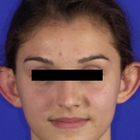
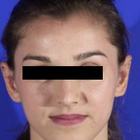
Front view
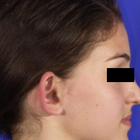
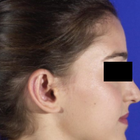
Full-side view
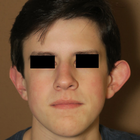

Front view

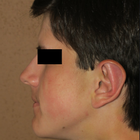
Full-side view
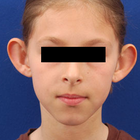
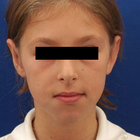
Front view
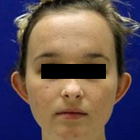
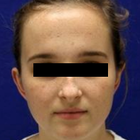
Front view
WHY US?
At Medijump, we're making medical easy. You can search, compare, discuss, and book your medical all in one place. We open the door to the best medical providers worldwide, saving you time and energy along the way, and it's all for FREE, no hidden fees, and no price markups guaranteed. So what are you waiting for?

Free

Best Price

Widest Selection

Risk-Free
What you need to know about Otoplasty in Saudi Arabia

Otoplasty, also referred to as cosmetic ear surgery, is a type of cosmetic procedure to change the size, shape, or position of the ear. It is performed on the visible part of the outer ear, called auricle. Some people choose to have the surgery to correct odd-shaped ears due to an injury or birth defect. Others have it because they are concerned with how their ears protrude too far from their head. Otoplasty can be performed at any age after the ears have reached their full size, generally after age 5. In some cases, the surgery may be done as early as age 3.
There are several types of otoplasty. The following are the most common:
- Ear pinning draws the ears closer to the head. It is usually done on people whose ears stick out too far from their head.
- Ear augmentation is ideal for individuals whose ears are small or have not completely developed. This type of otoplasty can increase the size of the outer ear.
- Ear reduction is usually done on people with macrotia, which is a condition when the ears are larger than normal. Otoplasty can reduce the size of the ears.
What does a Otoplasty Procedure Involve?
Otoplasty is typically carried out under local anesthesia with a sedative, so you will be awake but you will not feel any pain. In some cases, general anesthesia may be used, typically for younger children.
The techniques used by your surgeon vary based on the type of otoplasty you are having. In general, your surgeon makes an incision either within the inner creases of your ears or on the backs of your ears. Then, your surgeon manipulates the tissue of the ear, which may include removal of cartilage or skin, grafting of cartilage to the ear, or folding and shaping of cartilage using permanent stitches. Once your surgeon is done correcting the shape, size, and position of your ears, the incisions are closed with stitches.
How Long Should I Stay in Saudi Arabia for a Otoplasty Procedure?
Otoplasty can take between 1 and 3 hours to perform, depending on the complexity and the specifics of the procedure. It is typically done as an outpatient procedure, which means you can leave the hospital on the same day. It is recommended that you stay in Saudi Arabia for 7 more days for follow-up checkups and removal of stitches.
What's the Recovery Time for Otoplasty Procedures in Saudi Arabia?
The recovery period may vary from one person to another. You may experience numbness for several weeks, and mild bruising for about 2 weeks. For several months, your ears may feel stiff and sore.
You should be able to go back to work and resume your normal activities, including exercise, within one to two weeks after surgery. Physical contact sports, such as rugby, football, or judo, should be avoided for at least 3 months. You should also avoid swimming for up to 8 weeks following your otoplasty.
What sort of Aftercare is Required for Otoplasty Procedures in Saudi Arabia?
Your surgeon will provide post-operative instructions. Make sure to follow the instructions carefully to promote smooth and quick recovery. You should rest with your head elevated on 2-3 pillows to minimize swelling. It is recommended that you eat a light, soft, and cool diet for several days. Take pain medication as prescribed by your doctor. Avoid sleeping on your side or rub the incisions to keep pressure off your ears. Consider wearing shirts with loose-fitting collars or button-down shirts.
What's the Success Rate of Otoplasty Procedures in Saudi Arabia?
Otoplasty is a safe and effective procedure, with high satisfaction rates. More than 90% of people who had the procedure claimed to be extremely happy with the results. Note that it may take some time for the result to be fully visible.
While it is a safe procedure, you still need to be aware of possible risks and complications that otoplasty carries. These include bleeding, hematoma formation, infection of the skin, infection of the cartilage of the ear, permanent or temporary numbness around the affected area, scar or keloid formation, unfavorable results, prolonged pain, narrowing of the external ear canal, impaired healing, changes in skin sensation, asymmetry, and overcorrection.
Are there Alternatives to Otoplasty Procedures in Saudi Arabia?
There are not many viable alternatives to otoplasty as of yet. One of the most popular alternatives is nonsurgical otoplasty, which does not require any incisions. The procedure uses special sutures to pin the ears back and achieve a more symmetrical look. These sutures are woven into the ears and will remain in place permanently. They are also virtually invisible, so the results will look natural.
For babies under three months old with prominent ears, ear-molds can be taped to their ears to reshape the ears without surgery. This type of treatment typically takes about six to eight weeks.
What Should You Expect Before and After the Procedure
Before otoplasty, you may have prominent or large ears or other deformity caused by an injury or birth defect that bothers you. Some people also feel self-conscious and embarrassed by the shape, size, and position of their ears. After the procedure, your ears will be corrected. Small or underdeveloped ears will be augmented to increase the size, the size of large ears will be reduced, and prominent ears will be drawn closer to the head. Your appearance will improve and you may feel more confident.
Whilst the information presented here has been accurately sourced and verified by a medical professional for its accuracy, it is still advised to consult with your doctor before pursuing a medical treatment at one of the listed medical providers
No Time?
Tell us what you're looking for and we'll reachout to the top clinics all at once
Enquire Now

Popular Procedures in Saudi Arabia
Prices Start From $28

Prices Start From $1,945

Prices Start From $120

Prices Start From $275

Recommended Medical Centers in Saudi Arabia for procedures similar to Otoplasty

- Interpreter services
- Translation service
- Religious facilities
- Medical records transfer
- Medical travel insurance
- Health insurance coordination
- TV in the room
- Safe in the room
- Phone in the room
- Private rooms for patients available

- Interpreter services
- Translation service
- Religious facilities
- Medical records transfer
- Medical travel insurance
- Health insurance coordination
- TV in the room
- Safe in the room
- Phone in the room
- Private rooms for patients available

- Interpreter services
- Translation service
- Religious facilities
- Medical records transfer
- Medical travel insurance
- Health insurance coordination
- TV in the room
- Safe in the room
- Phone in the room
- Private rooms for patients available

- Interpreter services
- Translation service
- Religious facilities
- Medical records transfer
- Medical travel insurance
- Health insurance coordination
- TV in the room
- Safe in the room
- Phone in the room
- Private rooms for patients available
Otoplasty in and around Saudi Arabia
Introduction
The Kingdom of Saudi Arabia is the birthplace of Islam and is home to the holy Muslim city of Mecca, all Muslims are required to make a pilgrimage to this city at least once during their life and non-Muslims are forbidden from the city. There are other wonders to be found here, from the Red Sand Dunes in Riyadh, Jeddah’s coral architecture, to the azure waters of the Red Sea. In the last few years, the Kingdom has developed a plan to encourage international patients to seek treatment at its medical centers. The healthcare sector in the country has constantly improved and developed and the country has all the attributes to have a successful medical tourism industry, such as ultra-modern hospitals that are well-equipped with cutting-edge technology, foreign-trained doctors and specialists, and a well-established private healthcare sector.
Popular Cities and Regions in Saudi Arabia
The capital city is Riyadh, which is one of the wealthiest cities in the world. It offers amazing attractions for tourists, such as the Masmak Fortress, the National Museum, the Kingdom Center, the Sky Bridge, Riyadh Zoo, and the Antiquities Museum. Another popular city is Jeddah, which is called the Bride of the Red Sea. It’s a large metropolitan city with an incredible waterfront and beautiful old town. It’s the traditional gateway to Mecca, as well as the historic crossroads of traders and pilgrims. Most tourists visit this city to admire its World Heritage Red Sea architecture, explore its lively souq, relax in its laid-back coastline, and try its world-class cuisine.
Transport in Saudi Arabia
King Fahd International Airport is the largest airport in Saudi Arabia, located in the city of Dammam. It serves flights to and from numerous cities in Europe, Asia, and the Middle East. Domestic flights are the best way to travel around this country. Buses, taxis, and car rental are widely available for travel inside the cities.
Visas in Saudi Arabia
Almost all nationalities need to have a visa to visit Saudi Arabia, except for citizens of Bahrain, Kuwait, Oman, and the UAE. eVisa or visa on arrival is available for holders of passports of 51 countries, including all EU countries, the US, the UK, and Japan. Most other countries need to obtain a visa prior to arrival.
Weather in Saudi Arabia
Saudi Arabia has two seasons, summer and winter. Summer (April – October). The weather is extremely hot and humid. The average temperatures range between 40oC to 45oC, but it can soar to 49oC. Winter, from November to March, brings mild temperatures, with an average of 20oC during the day and 10oC during the night.
Additional Info
- Local Currency: Saudi riyal (SAR) is the currency. 1 USD is equivalent to 3.75 SAR.
- Money & Payments: ATMs are widespread and credit cards are widely accepted. There is no tipping culture.
- Local Language: Arabic is the official language, but English is widely spoken.
- Local Culture and Religion: Women do not need to wear abayas (a long black, robe-like dress) anymore, except at religious sites. However, both men and women have to wear modest clothing and refrain from showing too much skin. Islam is the state religion and the country’s law requires all citizens to be Muslim. Any non-Muslims who want to acquire Saudi Arabian nationality will have to convert to Islam. There are Hindus, Christians, and Buddhists in the country but all of them are foreign nationals.
- Public Holidays: The most celebrated public holidays in Saudi Arabia are Eid Al-Fitr, Eid Al-Adha, ad National Day.
Popular Searches
- Plastic Surgery in Thailand
- Dental Implants in Thailand
- Hair Transplant in Thailand
- Breast Augmentation Thailand
- Gastric Sleeve in Thailand
- Gender Reassignment Surgery in Thailand
- Laser Hair Removal in Bangkok
- Botox in Bangkok
- Dermatology in Bangkok
- Breast Augmentation in Bangkok
- Coolsculpting in Bangkok
- Veneers in Turkey
- Hair Transplant in Turkey
- Rhinoplasty in Turkey
- Stem Cell Therapy in Mexico
- Rhinoplasty in Mexico
- Liposuction in Mexico
- Coolsculpting in Tijuana
- Rhinoplasty in Korea
- Scar Removal in Korea
- Gastric Sleeve in Turkey
- Bone Marrow Transplant in India
- Invisalign in Malaysia
- Plastic Surgery in the Dominican Republic
- Tummy Tuck in the Dominican Republic
- Plastic and Cosmetic Surgery in Poland
- Rhinoplasty in Poland
- Hair Implant in Poland
- Dental Implants in Poland
- IVF in Turkey